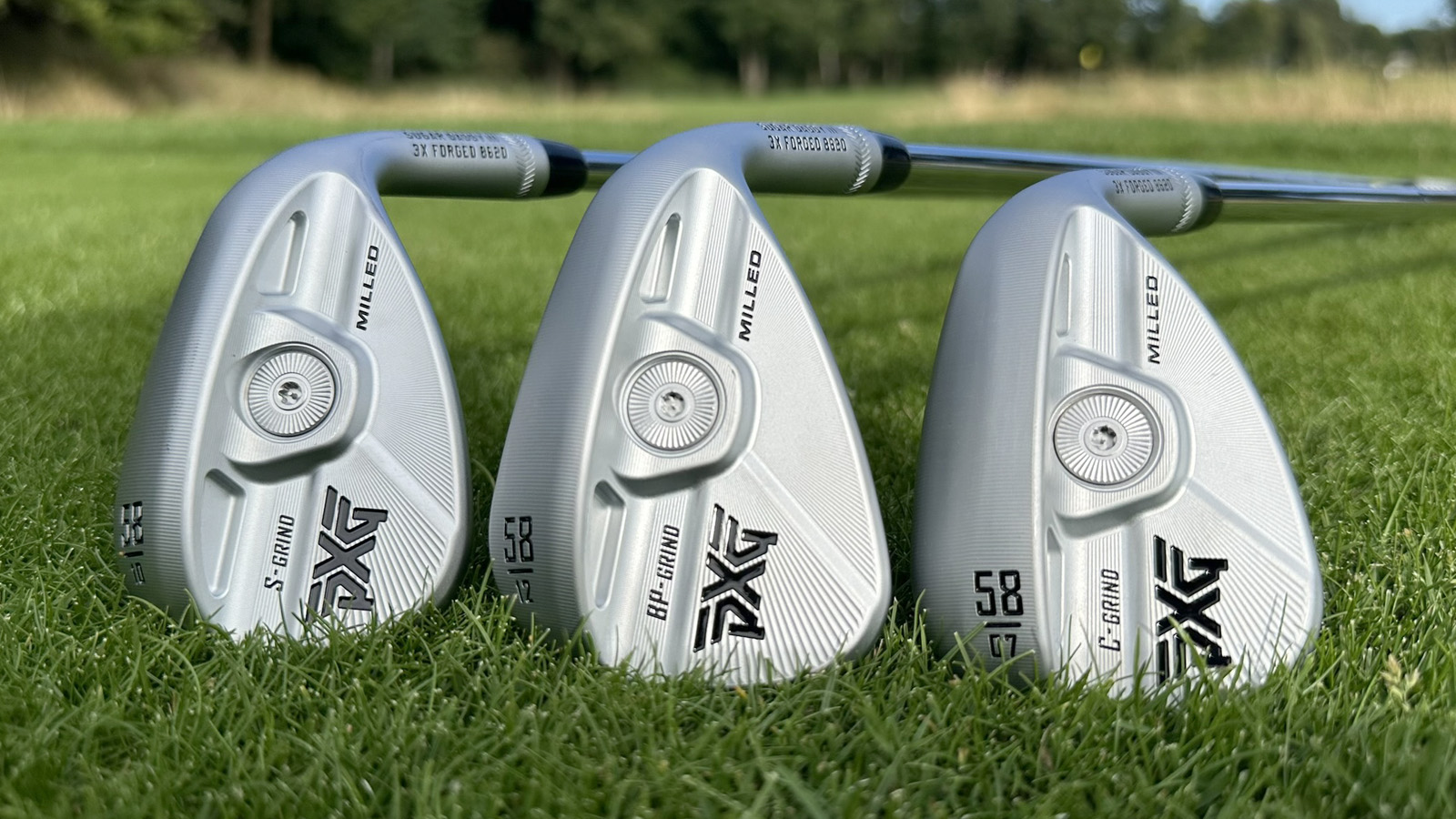PXG Sugar Daddy III Wedge Review
Category expert Sam De’Ath tests the PXG Sugar Daddy III wedges on the course to see if the premium price is justified

The PXG Sugar Daddy III wedges are a definite step up from the previous generation both in terms of looks and performance. The addition of a new grind option and precision weighting technology allows for golfers to really dial in their wedges to their specific needs
-
+
Classic profile at address
-
+
Impressively high spin
-
+
Refined premium looks
-
-
Chrome coating wears easily
-
-
Limited grind options across the loft range
Why you can trust Golf Monthly

Following on from the impressive Black Ops driver and fairway wood released at the start of the year, PXG is looking to compete with the best golf wedges thanks to the new Sugar Daddy III wedges. These 3x forged wedges certainly look the part but does the performance match the classy aesthetics? I took them out to the golf course to hit a variety of shots and find out.

PXG Sugar Daddy III Wedge
One of the first things I noticed with the PXG Sugar Daddy III wedges before clipping a few away was how premium these wedges look. While I was a fan of the Sugar Daddy II wedges, they were a little large in profile and I wasn’t a massive fan of the full-face grooves, so to see this new model look more refined, compact and much more like a classic looking wedge was a huge win. They reminded me of how the Titleist Vokey SM10 wedges look behind the ball.
The Sugar Daddy III wedges are offered in a traditional chrome finish ($299/£279) and an Xtreme Dark finish ($349/£329). While the look of the traditional chrome finish looks superb alongside the CNC milling on these wedges, after just 18 holes I noticed the heads were marking up fairly easily, which was a little disappointing to see.

PXG Sugar Daddy III Wedge
Each golfer's action when pitching and chipping is different and that’s where these wedges stand out a little from other wedges on the market. The PXG Sugar Daddy III wedges feature Precision Weighting Technology to help golfers optimize their performance by building a wedge to their specific requirements. This technology is seen on the wedges through a large weight, located on the rear of the club. This weight is offered in 2 gram increments to help dial in the perfect head and swing weight for any golfer. If golfers have heads that are too heavy, the club can hit the ground early and will result in problems releasing the clubhead and poorly struck shots, so this is an important thing to get right via a fitting.

Sam De'Ath testing the new PXG Sugar Daddy III wedge
As well as the BP grind and the C grind found in the Sugar Daddy II wedges, PXG has introduced the new S grind to this year's Sugar Daddy III line up. The S grind will be offered in all loft options whereas the BP is only available from 54°-60° and the C only in 58° and 60°. The new S grind has been designed for golfers who play on a variety of surfaces and want a versatile wedge with adequate bounce when opening the face or keeping it more square. My personal favourite is the C grind with 7° of bounce. This set-up is perfect for my shallow attack angle and firmer playing surfaces. During my testing I found the BP grind to be ultra-forgiving, mimicking the performance of some of the most forgiving wedges thanks to the higher bounce and wide sole. While there aren't as many grind options as say in the Vokey SM10 or Ping S159 wedges, the three grinds with different bounce options will be more than enough for most club golfers.

There are now three grind options on the PXG Sugar Daddy III Wedge's
While the full-face groove option is available in the BP grind, I feel as though the new compact and traditional head shape of the C and S grind will please golfing purists. Thanks to the extensive forging and CNC milling these wedges undertake, they not only look superb but feel incredibly soft and smooth through impact. This beautiful feel will please the better golfer and provide them with plenty of feel for complete distance control. The precision milled grooves offered a huge amount of spin from the fairway and more impressively from the rough. I tested shots up to 70 yards from both the fairway and the rough and actually saw the ball reacting similarly when hitting the green.


Overall I was really impressed with the PXG Sugar Daddy III wedges in terms of both the performance and the modifications made to the aesthetics over their predecessor. The refined, traditional looks and performance from a variety of lies means they're making a strong case make for a place in my bag.
Get the Golf Monthly Newsletter
Subscribe to the Golf Monthly newsletter to stay up to date with all the latest tour news, equipment news, reviews, head-to-heads and buyer’s guides from our team of experienced experts.

Sam has worked in the golf industry for 14 years, offering advice on equipment to all levels of golfers. Sam heads up any content around fairway woods, hybrids, wedges, putters and golf balls but also writes about other equipment from time to time.Sam graduated from Webber International University in 2017 with a BSc Marketing Management degree while playing collegiate golf. His experience of playing professionally on both the EuroPro Tour and Clutch Pro Tour, alongside his golf retail history, means Sam has extensive knowledge of golf equipment and what works for different types of golfer.
Sam’s current What’s In The Bag?
Driver: TaylorMade Qi35 9°
Fairway Woods: TaylorMade Qi35 15°, Srixon ZXi 18°
Irons: TaylorMade CB (6-PW) P770 (4-5)
Wedges: Titleist Vokey SM10, 50°, 54°, 60°
Putter: Kevin Burns 9307
Ball: Titleist Pro V1x
-
 DP World Tour Announces New $4m Event Coming To India
DP World Tour Announces New $4m Event Coming To IndiaThe inaugural DP World India Championship will offer the circuit’s largest ever prize fund for an event on the subcontinent
By Mike Hall Published
-
 Wesley Bryan Confirms He Will Appeal ‘Indefinite’ PGA Tour Suspension
Wesley Bryan Confirms He Will Appeal ‘Indefinite’ PGA Tour SuspensionThe YouTube content creator has confirmed he will be appealing the PGA Tour’s decision to suspend him for taking part in the LIV Golf: The Duels match
By Mike Hall Published
-
 Justin Thomas Confirms Stand-In Caddie Will Not Replace Long-Term Looper After First Victory Since 2022
Justin Thomas Confirms Stand-In Caddie Will Not Replace Long-Term Looper After First Victory Since 2022Thomas won the RBC Heritage with Max Homa's former looper, Joe Greiner as his assistant but is looking forward to welcoming his regular caddie back soon
By Jonny Leighfield Published